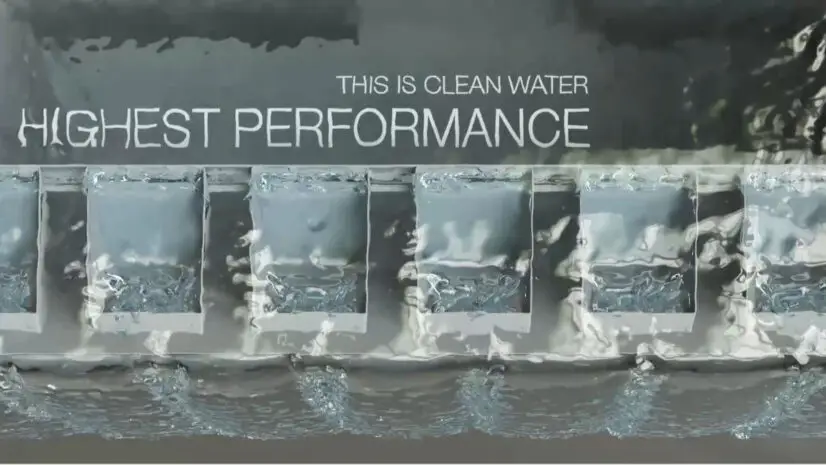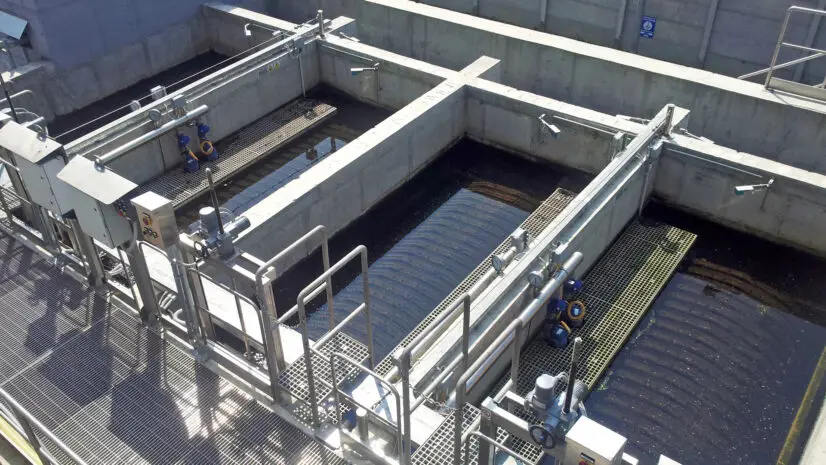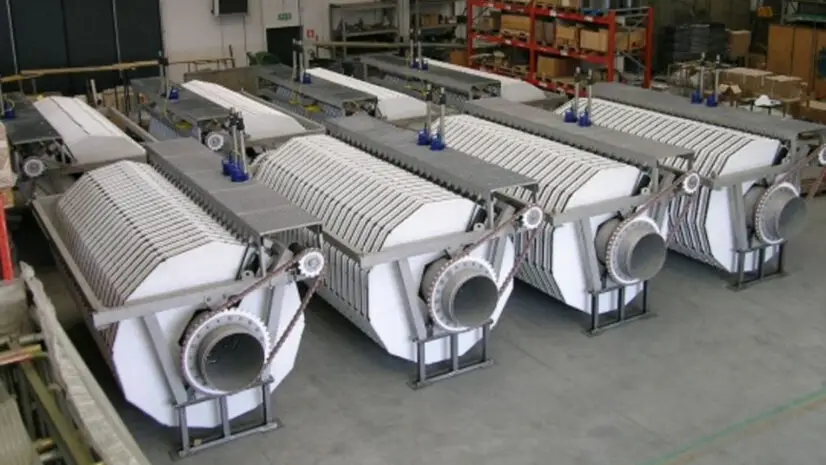Filtration in Tertiary Wastewater Treatment: overview, regulations, technologies

Tertiary filtration, or final filtration, is a set of processes and technologies that are part of the larger set of tertiary wastewater treatments. A single goal: to enable civil wastewater treatment plants and process industries to obtain water of a very high quality level, capable of meeting the most stringent national and supranational regulations for discharge into surface water bodies and reuse in civil, agricultural and industrial settings.
What are these processes and what are the leading technologies? Let’s clarify right away.
1. Tertiary filtration: overview
Tertiary filtration of wastewater is an advanced treatment process that aims to remove suspended solid particles (total suspended solids) and possibly nutrients still present in the water after primary and secondary treatment.
The main objective of the process is the discharge of the treated resource into surface bodies, such as rivers and lakes, in compliance with relevant national and international regulations. In addition, the tertiary filtration process is increasingly recognized as a useful tool for the reuse of treated water in agricultural, industrial or municipal settings: a need increasingly encountered, given the increasingly evident scarcity of this resource and the considerable problems associated with its management.
2. Primary, secondary and tertiary treatments: how filtration fits into wastewater treatment
To better understand where tertiary filtration technologies fit within a wastewater treatment plant, let’s look at the difference between primary, secondary, and tertiary wastewater treatments.
- Primary treatments focus on the removal of coarser suspended solids through physical processes, such as sedimentation or screening.
- Secondary treatments focus on the removal of organic contaminants and nutrients. This type of treatment involves the use of biological processes such as nitrification/denitrification.
- Tertiary treatments are the last stage of wastewater treatment: at this stage, the remaining suspended solids are separated until concentrations of 5-10 mg/L, residual phosphorus and nitrogen components, and microbial load are obtained at discharge. This type of treatment involves the use of advanced filtration, adsorption and disinfection technologies.
Tertiary filtration is a specific process within the tertiary treatment bed: this involves the use of a filter medium for the final separation of suspended solids. However, it must be remembered that these steps are always found in frequency only in civil purifiers. In the industrial field, on the other hand, we find a great variability of water and plant requirements, and a different combination of treatments may therefore be necessary: in this area, it is therefore better to speak of final filtration.
Finally, precisely because of its function of “finishing” the effluent, preceding only disinfection interventions, the processes that go by this name are also referred to in the realm of advanced wastewater treatment.
3. Effluent quality in tertiary filtration: numbers and regulations
The effluent quality of tertiary filtration systems depends on the type of filtration technology used, but in general, these systems are capable of producing high quality treated water with low concentrations of suspended solids and other contaminants.
Tertiary filtration systems are capable of removing most of the suspended solids. In addition, the amounts of nutrients such as phosphorus and nitrogen are also greatly reduced.
In general, the effluent from tertiary filtration systems is able to meet the criteria set by EU Directive 2020/2184: 10 mg/L total suspended solids at discharge.

4. Types of tertiary filtration
As with other stages of wastewater treatment, with tertiary filtration (or final filtration) we encounter a good number of processes and technologies that can meet the needs with urban and industrial waters.
The literature recognizes three main tertiary filtration processes: think of Metcalf & Eddy’s discussion Wastewater Engineering. Treatment and Reuse.
- Surface Filtration. Treatment occurs with a filter medium through a staining process, thus two-dimensional (as in the case of micro-net cloth filters).
- Depth or volume filtration. In this case, suspended substances pass through a filter bed consisting of granular material (as in sand filters) or compressible material (as in free-fiber cloth filters). There are three “dimensions” over which to develop the filtration instead of two: this is why it is a much more efficient process with the same size of machinery used.
- Membrane filtration. In this type, wastewater passes under pressure through a thin membrane. This consists of hollow fibers or sheets of composite material (spirally wound). This is a staking process, as in the case of surface filtration.
5. The utility of tertiary filtration
We have seen that tertiary water filtration produces high quality water suitable for various applications. The main utilities of tertiary filtration of wastewater include the following:
- The need to remove total suspended solids at advanced levels to improve the efficiency of downstream processes such as disinfection (avoiding excessive fouling of UV lamps).
- Reducing the environmental impact of human activities on water resources and reducing pressure on natural water resources, including limiting eutrophication phenomena by removing nutrients from water (nitrogen and phosphorus).
- Compliance with national and international environmental regulations, which impose emission limits for certain chemical, physical and biological parameters of wastewater.
- The reuse of treated water for non-potable purposes, both civil and industrial. Some examples: agricultural irrigation, road and vehicle washing, power generation, and the replenishment of process and cooling water.
6. Tertiary filtration solutions
There are several tertiary filtration technical solutions. Here are some of the most efficient ones:
- Sand filters: these solutions use a layer of sand to remove suspended solid particles. Water passes through the sand layer, which retains suspended solids, before being discharged.
- Micro-net cloth filters: in these systems, the filter media is a cloth with fixed-length threads. This is a classic surface filtration application.
- Pile cloth media filters: the filter media consists of long, decomposed filaments, which achieve depth filtration similar to sand filters (on smaller volumes). Limited ancillary works, minimal energy use and limited to backwashing of the cloths.
- Membrane filters: use membranes with different pore sizes to remove contaminants in the water. Water passes through the membranes, which retains suspended solids and other unwanted substances, before being discharged.

7. Technical benefits and applications of tertiary filtration
Over the years, various applications of tertiary filtration processes and technologies have been tried. The following are some examples:
- tertiary treatment of municipal wastewater,
- food industry,
- plastics industry,
- chemical and pharmaceutical industries,
- paper mills, tanneries, textile industries,
- oil & gas sector.
Resources
Needs of wastewater treatment
Discover the solution for all needsComparing different technologies
Find out all the different technologiesFind out more
All technical articlesOur Newsletter
Sign up for the MITA Water Technologies newsletter: stay up-to-date on systems for municipal and industrial wastewater treatment and filtration.